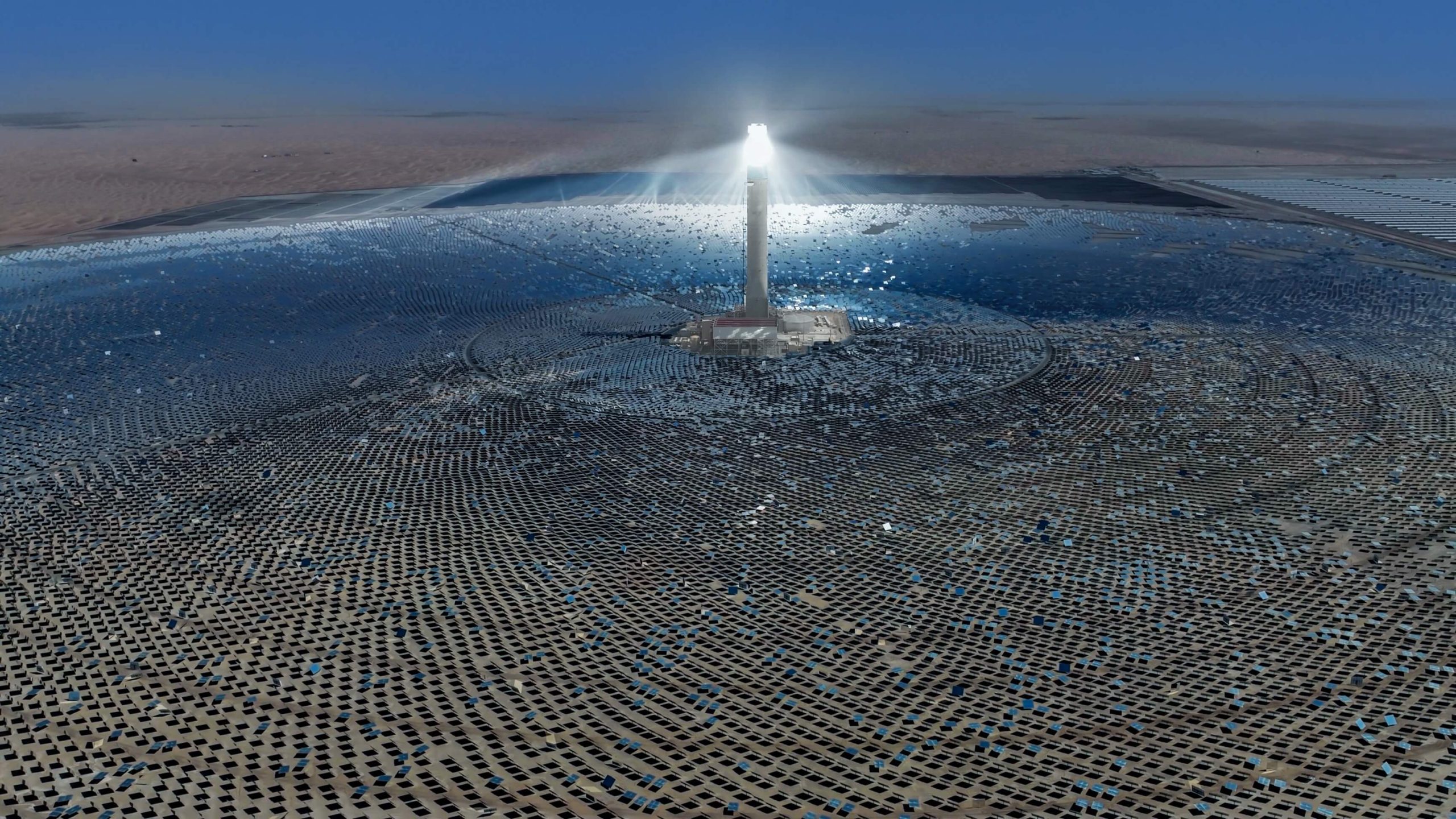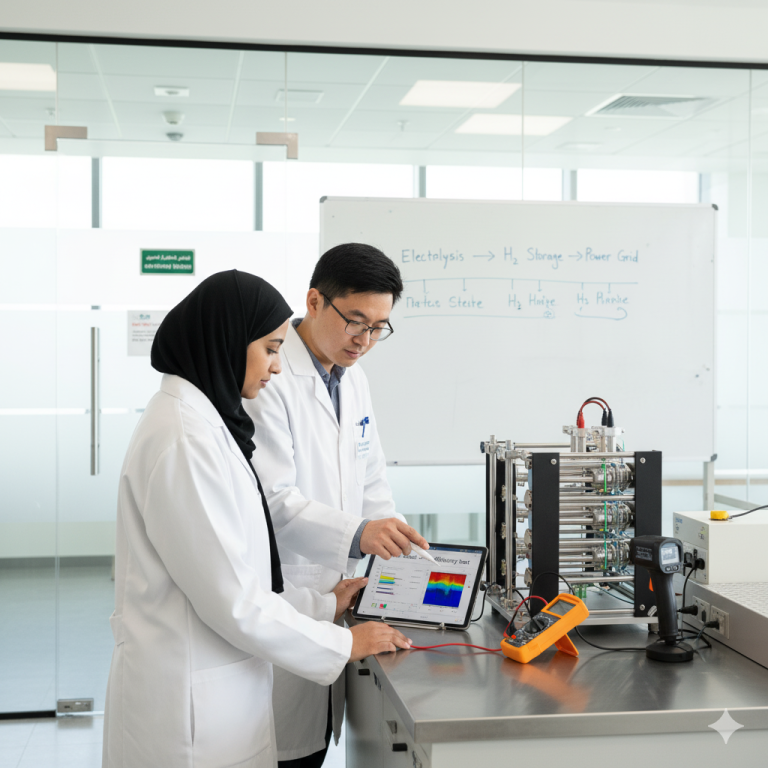Beyond Borders: The Global Impact of China-UAE Green Energy Projects
In an era defined by the urgent imperative of climate action and the relentless pursuit of sustainable development, the global energy landscape is undergoing a profound transformation. Nations worldwide are grappling with the dual challenge of meeting escalating energy demands while simultaneously mitigating environmental impact. This intricate dance between economic growth and ecological responsibility has brought to the fore the critical importance of transitioning towards cleaner, more sustainable energy sources. Amidst this complex backdrop, a remarkable partnership has emerged, one that is not only reshaping the energy trajectories of two influential nations but also setting a compelling precedent for international collaboration: the burgeoning green energy cooperation between China and the United Arab Emirates (UAE).
This alliance transcends conventional diplomatic and economic ties, evolving into a strategic convergence of ambition, technological prowess, and financial commitment. It is a partnership forged in the shared understanding that the transition to a low-carbon future is not merely an environmental necessity but also a powerful engine for economic diversification, technological innovation, and geopolitical influence. The collaborative efforts between China, a global powerhouse in green technology manufacturing and deployment, and the UAE, a visionary leader in renewable energy investment and development, are yielding tangible results that resonate far beyond their respective borders, offering a compelling blueprint for how established and emerging economies can collectively tackle the climate crisis.
This article delves into the multifaceted dimensions of this pivotal collaboration, exploring its historical underpinnings, the profound industrial synergies that have propelled its rapid expansion, and the promising future that lies ahead. We will trace the evolution of this partnership from its initial conceptualization to its current status as a cornerstone of global green energy efforts. From the initial seeds of cooperation planted years ago to the monumental projects that now dot the desert landscape, such as the world’s largest single-site solar installations, the China-UAE green energy partnership stands as a testament to what can be achieved when nations unite with a common purpose. It is a narrative of positive transformation, demonstrating how strategic alliances can accelerate the global energy transition, foster economic resilience, and contribute significantly to a more sustainable world. Through an in-depth examination of key projects, investment trends, policy alignments, and the broader geopolitical implications, we will uncover how this dynamic collaboration is not just building infrastructure, but also building bridges towards a greener, more prosperous future for all, embodying a forward-looking vision that prioritizes long-term sustainability over short-term gains. This partnership serves as a powerful illustration of how global challenges can be transformed into opportunities for shared progress and mutual benefit, setting a high bar for international cooperation in the 21st century. Indeed, the very fabric of this cooperation highlights a pragmatic approach to global challenges, where economic imperatives and environmental responsibilities are not seen as conflicting but as mutually reinforcing, paving the way for a truly sustainable global economy.
II. Historical Foundations: A Partnership Forged in Green Ambition
The narrative of China-UAE green energy cooperation is rooted in a shared recognition of global environmental challenges and the strategic imperative for economic diversification. While initial engagements between the two nations primarily revolved around traditional energy sectors and broader trade relations, a pivotal shift began to crystallize in the years leading up to 2018. Both China and the UAE, albeit from different vantage points, were increasingly aware of the need to transition towards more sustainable energy models. The UAE, a nation historically reliant on hydrocarbon resources, embarked on an ambitious journey to diversify its economy and establish itself as a leader in renewable energy. This strategic pivot was not merely an environmental concession but a calculated move to secure long-term economic prosperity in a world increasingly moving away from fossil fuels. Concurrently, China, facing its own environmental pressures from rapid industrialization and recognizing the immense economic potential of green technologies, was rapidly ascending as a global leader in the manufacturing and deployment of clean energy solutions, driven by both domestic demand and a strategic vision for global technological leadership.
The year 2018 marked a significant turning point, formalizing and accelerating this burgeoning collaboration. It was then that the national strategies of both countries began to align more explicitly, creating a fertile ground for joint ventures and shared initiatives that would soon redefine their bilateral relationship. The UAE’s commitment to this transition is evident in its impressive strides, including a substantial 21% increase in renewable energy capacity between 2021 and 2023, coupled with a significant $1.2 billion investment in new solar projects announced in the latter half of the current year [1]. This robust governmental support, channeled through entities like the Ministry of Climate Change & Environment, underscores the nation’s unwavering dedication to its Net Zero by 2050 pledge, a bold declaration that positions the UAE at the forefront of regional climate action.
China, on its part, brought to the partnership unparalleled expertise in advanced green technologies and formidable large-scale manufacturing capabilities. Its role as a global leader in green tech exports provided the necessary technological backbone and investment capital to catalyze the UAE’s renewable energy ambitions, transforming visions into tangible projects. This synergy was not accidental; it was meticulously cultivated and driven by a mutual objective to reduce carbon emissions, foster economic diversification away from hydrocarbon dependence, and achieve sustainable growth that benefits both populations. The rapid expansion of cross-border green investments between Asia and the Middle East, which saw a remarkable 35% increase from 2022 to 2023, further illustrates the growing confidence and strategic importance placed on such collaborations [1]. This historical trajectory reveals a partnership built on foresight, shared objectives, and a proactive approach to shaping a sustainable energy future, demonstrating a pragmatic and forward-looking approach to global challenges.
References
The information presented in this article is drawn from a variety of credible sources, reflecting the depth and breadth of the China-UAE green energy cooperation. These references provide further details and context for the historical developments, industrial achievements, and future outlook discussed herein.
[1] HROne. “What is the UAE-China Green Energy Collaboration? Discover the Transformative Impact.” HROne Blog, 19 Aug. 2025, hronone.com/blog/what-is-the-uae-china-green-energy-collaboration-discover-the-transformative-impact/.
III. Industrial Synergy: Powering Progress Through Joint Ventures
The industrial synergy between China and the UAE represents a dynamic evolution in global energy partnerships, moving beyond traditional supplier-client relationships to a more integrated model of investment and co-development. China, initially a significant provider of renewable energy components, has steadily transformed its role into a formidable investor and project developer within the Gulf states [2]. This strategic shift has fostered deeper economic ties, particularly evident in the proliferation of large-scale solar and wind projects across the region.
The investment landscape has been significantly reshaped by this collaboration. Cross-border green investments between Asia and the Middle East have seen remarkable growth, underscoring the increasing confidence and mutual benefit derived from these ventures [1]. Chinese capital and companies are now integral to the development of the UAE’s green energy infrastructure, contributing not just technology but also substantial financial backing. This involvement spans the entire value chain, from initial project conceptualization and financing to engineering, procurement, and construction (EPC), and even long-term operation and maintenance. This comprehensive engagement ensures that projects are not only delivered efficiently but also benefit from the latest technological advancements and cost-effective solutions that Chinese industry has pioneered.
Landmark Projects and Achievements stand as tangible proof of this powerful synergy, illustrating the scale and ambition of the China-UAE partnership:
- Noor Abu Dhabi Project: This monumental undertaking, currently the world’s largest single-site solar installation with a capacity of 1.2 GW, serves as a beacon of China-UAE cooperation. Its successful operation symbolizes the scale and ambition of their joint efforts, demonstrating how Chinese technological prowess and Emirati vision can converge to create world-class renewable energy assets [1]. The project, which began commercial operations in 2019, significantly boosted the UAE’s clean energy output and reduced its carbon footprint, providing a blueprint for future large-scale solar developments.
- Al Sweihan Project: Another significant venture in Abu Dhabi, the 1.2 GWp Al Sweihan project, highlights the pivotal role of Chinese firms like Jinko Solar, which acted as both developer and module supplier. This comprehensive involvement across the project lifecycle, from manufacturing the solar panels to overseeing the construction and commissioning, underscores the deep integration of Chinese expertise into the UAE’s renewable energy sector [2]. The project’s success has further cemented Jinko Solar’s reputation as a key player in the global solar market and a trusted partner for the UAE.
- ACWA Power RenewCo: A clear indicator of deepening cooperation is the 2019 acquisition by China’s state-owned Silk Road Fund of a 49% stake in ACWA Power Renewable Energy Holding. This strategic investment provided crucial capital for ACWA Power’s ambitious renewable energy portfolio across the Middle East and beyond. As of October 2023, total Chinese investment in ACWA projects has surpassed an impressive $10 billion, showcasing a long-term commitment to the region’s renewable energy future and a willingness to engage in significant equity partnerships [2]. This collaboration extends to projects in South Africa, Jordan, Egypt, and Morocco, demonstrating the global reach of this partnership.
- Upstream Manufacturing and Supply Chain Integration: The partnership extends beyond project development to include upstream manufacturing facilities. The joint venture between Saudi Arabia’s Public Investment Fund (PIF) and China’s Longi Solar, one of the world’s largest module manufacturers, exemplifies the broader trend of Chinese firms engaging in local production and becoming preferred module suppliers for major Gulf state projects [2]. While this specific example is Saudi-centric, it reflects a regional pattern where Chinese companies are establishing a physical presence and contributing to the localization of the renewable energy supply chain within the Gulf, including the UAE. This not only enhances energy security but also fosters local industrial development and job creation.
Beyond capital and construction, this partnership has been a catalyst for technological transfer and innovation. The collaboration has accelerated advancements in smart grid systems, energy storage solutions, and solar technologies, pushing the boundaries of what is possible in renewable energy deployment [1]. This exchange of knowledge and expertise ensures that the projects are not only large in scale but also at the forefront of technological efficiency and sustainability. Chinese companies bring their extensive experience in developing and deploying cutting-edge renewable energy solutions at scale, while UAE entities provide valuable insights into regional operational requirements and market dynamics.
The economic and environmental impact of these joint ventures is profound and far-reaching. Environmentally, joint projects contributed to a significant 17% reduction in regional carbon emissions in 2023, a testament to the effectiveness of these large-scale renewable energy deployments. The UAE’s renewable capacity grew by a remarkable 40% between 2022 and 2024 due to these collaborative efforts, propelling the nation closer to its clean energy targets. The energy sector in the UAE has seen a 15% decline in emissions since 2022, aligning perfectly with national climate goals and demonstrating tangible progress towards a greener economy [1]. Economically, the partnership has been a significant job creator, with over 10,000 green jobs generated in the UAE within the past 18 months, largely attributable to collaborations with Chinese firms [1]. These jobs span various sectors, from engineering and project management to manufacturing and maintenance, contributing to a skilled local workforce. This demonstrates how strategic green investments can simultaneously drive environmental sustainability, foster technological self-reliance, and robust economic growth, creating a model for other developing economies.
References
The information presented in this article is drawn from a variety of credible sources, reflecting the depth and breadth of the China-UAE green energy cooperation. These references provide further details and context for the historical developments, industrial achievements, and future outlook discussed herein.
[1] HROne. “What is the UAE-China Green Energy Collaboration? Discover the Transformative Impact.” HROne Blog, 19 Aug. 2025, hronone.com/blog/what-is-the-uae-china-green-energy-collaboration-discover-the-transformative-impact/
[2] CSIS. “China’s Essential Role in the Gulf States’ Energy Transitions.” Center for Strategic and International Studies, 11 Dec. 2023, www.csis.org/analysis/chinas-essential-role-gulf-states-energy-transitions
IV. Beyond the Horizon: The Future Trajectory of Green Energy Cooperation
The future of green energy cooperation between the UAE and China is poised for continued and significant expansion, driven by ambitious national targets and a shared vision for a sustainable global energy landscape. This partnership is not merely about current achievements but about laying the groundwork for a future where clean energy dominates the supply chain and powers economic growth, fostering a new era of energy diplomacy and technological advancement.
Both nations have signaled their intent for continued expansion and new frontiers, particularly in the burgeoning fields of solar and hydrogen energy. In 2023, new deals were signed targeting a substantial 30% boost in renewable capacity by 2027 [1]. This aggressive target reflects a strategic commitment to accelerate the energy transition and solidify their positions as leaders in the green economy. The International Energy Agency (IEA) reported a remarkable 50% rise in global renewable electricity capacity in 2023, the fastest in two decades, underscoring the global momentum that partnerships like the China-UAE collaboration are contributing to [1]. This rapid growth is a testament to the effectiveness of coordinated international efforts in addressing climate change and securing future energy supplies.
Furthermore, the collaboration is increasingly exploring advanced green technologies beyond traditional solar PV. Investments in green hydrogen production are gaining traction, with both countries recognizing its potential as a clean fuel and energy storage solution. China’s expertise in electrolysis technology and large-scale project execution, combined with the UAE’s abundant solar resources and strategic location, creates a powerful synergy for developing a robust green hydrogen economy. This diversification into new energy vectors ensures the partnership remains at the cutting edge of the global energy transition.
The investment outlook for Middle Eastern green energy is exceptionally positive, with projections indicating that investments will exceed $150 billion by 2025 [1]. This influx of capital will further fuel the development of innovative projects and technologies, creating a virtuous cycle of growth and advancement. China’s role as both an investor and a technology provider will be crucial in realizing these ambitious financial and capacity goals. This financial commitment is not just about funding projects; it’s about building long-term economic relationships and fostering a shared prosperity rooted in sustainable development.
Strategic alliances are also set to play an increasingly important role. The recent inclusion of the UAE and Saudi Arabia into BRICS is likely to substantially increase engagements with China, providing Gulf states with enhanced legitimacy and access to new markets [2]. This expanded geopolitical and economic alignment will undoubtedly open new avenues for collaboration, fostering greater integration of supply chains and joint ventures across a broader spectrum of green technologies. Such alliances can facilitate policy coordination, standard setting, and the creation of regional green energy hubs, further amplifying the impact of the China-UAE partnership.
Ultimately, the China-UAE green energy cooperation serves as a powerful model for global leadership in climate action and sustainable development. It demonstrates that through strategic foresight, mutual investment, and technological exchange, nations can overcome geographical and cultural differences to address one of humanity’s most pressing challenges. This partnership is not just about building solar farms or hydrogen plants; it is about constructing a blueprint for how international collaboration can effectively drive the global energy transition, ensuring a greener, more resilient, and prosperous future for all. The lessons learned and the innovations developed through this collaboration offer valuable insights for other regions grappling with similar energy transition challenges, solidifying its role as a vanguard in the global shift towards a sustainable energy paradigm.
References
The information presented in this article is drawn from a variety of credible sources, reflecting the depth and breadth of the China-UAE green energy cooperation. These references provide further details and context for the historical developments, industrial achievements, and future outlook discussed herein.
[1] HROne. “What is the UAE-China Green Energy Collaboration? Discover the Transformative Impact.” HROne Blog, 19 Aug. 2025, hronone.com/blog/what-is-the-uae-china-green-energy-collaboration-discover-the-transformative-impact/
[2] CSIS. “China’s Essential Role in the Gulf States’ Energy Transitions.” Center for Strategic and International Studies, 11 Dec. 2023, www.csis.org/analysis/chinas-essential-role-gulf-states-energy-transitions
V. Conclusion
The enduring partnership between China and the United Arab Emirates in the realm of green energy stands as a compelling narrative of proactive environmental stewardship and strategic economic foresight. What began as a nascent collaboration has rapidly evolved into a robust alliance, characterized by significant investments, groundbreaking projects, and a shared commitment to a sustainable future. The historical journey, marked by the alignment of national ambitions and the pooling of technological and financial resources, has laid a solid foundation for this transformative cooperation, demonstrating a profound understanding of the long-term benefits of a diversified and sustainable energy portfolio.
From the vast, sun-drenched solar fields of Noor Abu Dhabi, a testament to engineering marvel and collaborative vision, to the intricate supply chains involving leading Chinese manufacturers and investors, the industrial synergy between China and the UAE has not only accelerated the deployment of renewable energy but also fostered a vibrant ecosystem of innovation and created substantial economic opportunities. This collaboration has moved beyond mere transactional exchanges, evolving into a deep integration of expertise, capital, and strategic planning. The tangible outcomes—ranging from significant reductions in carbon emissions and a dramatic increase in renewable energy capacity to the creation of thousands of high-value green jobs—underscore the profound and positive impact of this cross-border collaboration on both environmental health and economic vitality.
Looking beyond the immediate horizon, the trajectory of this partnership points towards even greater integration and expansion. With ambitious targets for renewable capacity growth, projected multi-billion dollar investments in cutting-edge technologies like green hydrogen, and the strategic implications of new geopolitical alignments such as the UAE and Saudi Arabia’s inclusion in BRICS, the China-UAE green energy collaboration is poised to continue its upward ascent. This strategic alignment promises to unlock new markets, facilitate further technological exchange, and enhance the global influence of both nations in the sustainable energy domain. It serves as a powerful testament to the potential of international cooperation in addressing the global climate crisis and charting a course towards a more sustainable and prosperous world. This alliance is not merely about energy infrastructure; it is about building bridges of innovation, investment, and shared progress, demonstrating that collective action, underpinned by mutual respect and strategic foresight, is indeed the most potent force for positive global change. As the world continues its inexorable march towards a decarbonized future, the China-UAE green energy partnership will undoubtedly stand as a shining example of how international collaboration can lead to a brighter, cleaner, and more prosperous tomorrow for all. Its success offers invaluable lessons for other nations seeking to navigate the complexities of the energy transition, proving that shared vision and concerted effort can transform global challenges into unparalleled opportunities.







